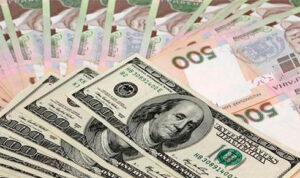
The National Bank of Ukraine’s (NBU) net sales of dollars in the second week of September jumped to $873.1 million from $302.3 million a week earlier, the highest level this year.
According to the NBU’s website, from September 11 to 15, its purchases of foreign currency fell to a meager $0.05 million, while sales jumped from $302.7 million to $873.1 million.
On the cash market, the dollar rose by 20 kopecks over the week, approaching the level of 38.2 UAH/$1. On Monday, Finance Minister Sergii Marchenko said that the draft state budget for 2024 includes an average annual exchange rate of 41.4 UAH/$1.
As reported, in August, the volume of the National Bank’s interventions increased to $2.364 billion from $1.933 billion in July and $1.798 million in June. At the same time, the volume of external financing in August decreased to $1.664 billion, so international reserves decreased by 3.2% to $40.387 billion from a record high of $41.72 billion.
In total, since the beginning of this year, the NBU has purchased $195.9 million in the market, while selling $18 billion 21.8 million.
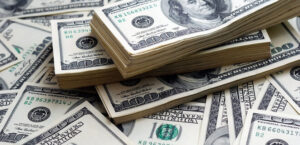
Net sales of dollars by the National Bank of Ukraine (NBU) in the first week of August rose to $458.3m from $349.3m in the last week of July.
According to the NBU on its website, from July 31 to August 4, 2023, its purchase of currency slightly increased from $1.1m to $2.0m, while its sale increased from $350.5m to $460.3m.
At the same time, on the cash market, the dollar, which rose in price by 45 kopecks a week earlier, lost about 20 kopecks this week and at the end of the week was quoted at a rate of about UAH 37.40/$1.
In total, since the beginning of this year, the NBU has purchased $192.4m on the market, while it sold $14bn 741.4m.
As reported, the volume of the National Bank’s interventions in July rose slightly to $1.946 bln from $1.848 bln in June and $1.93 bln in May. However, international financial support amounted to about $4.4 billion last month. As a result, international reserves, which grew by 4.5% in June to a new historic high of $39.00 billion, will exceed this record at the end of July and, according to experts, will reach $41 billion.
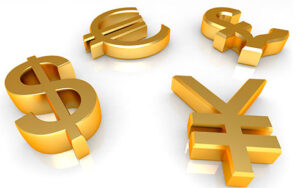
The U.S. dollar is getting cheaper against the euro and the pound sterling in trading on Tuesday, stable against the yen.
The ICE-calculated index, which shows the dollar’s movement against six currencies (euro, Swiss franc, yen, Canadian dollar, pound sterling and Swedish krona), is losing 0.24%; the broader WSJ Dollar Index is down 0.21%.
The euro to dollar was up 0.4% to $1.0954 as of 3 p.m., compared with $1.0909 at the close of the previous session.
The euro was supported on Tuesday by statements from European Central Bank (ECB) President Christine Lagarde, who made it clear that the regulator is unlikely to end its monetary tightening cycle anytime soon.
“It is unlikely that in the near future we will be able to state with absolute certainty that rates have peaked,” Lagarde said during an ECB forum in Sintra on Tuesday.
According to Lagarde, the effects of the 400 basis points (bps) rate hike since last July have not yet fully materialized.
“However, our work is not over yet. If the economic outlook does not change significantly, we will continue to raise rates in July,” Lagarde said in a statement posted on the ECB’s website.
The pound rose in trading to $1.2732 from $1.2714 the day before.
The dollar-yen exchange rate is 143.52 yen against 143.5 yen at Monday’s market close.
Japanese Finance Minister Shunichi Suzuki on Tuesday called the sharp weakening of the yen seen in recent weeks “one-sided and precipitous” and said the government would “take the necessary measures” in case of excessive fluctuations.
The dollar-yuan exchange rate fell during trading to 7.2099 yuan from 7.2376 yuan the day before. Investors reacted positively to the statement of Li Qiang, Premier of the State Council of China, that the authorities still expect to achieve the goal of 5% growth of Chinese GDP in the current year and are ready to take stimulating measures.
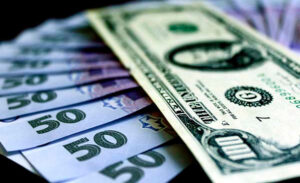
Net sales of dollars by the National Bank of Ukraine (NBU) fell this week to $277.6 million from $457.0 million a week earlier after three weeks of increases.
According to the NBU on its website, from June 5 to June 9, 2023, its purchase of currency rose to $11.9 million from $15.1 million, while sales fell to $292.7 million from $469.0 million.
In the cash market, the dollar depreciated by about UAH 0.10 during the week – to UAH 37.15/$1.
Since the beginning of the year, the NBU bought $146.0 mln on the market, while it sold $11 bln 40.3 mln.
As reported, the volume of interventions of the National Bank in May increased to $1.93 billion, compared to $1.37 billion in February and $1.67 billion in March.
However, due to a significant influx of external financing, international reserves rose by 4%, or $1.358 billion, to $37 billion 311.3 million in May.
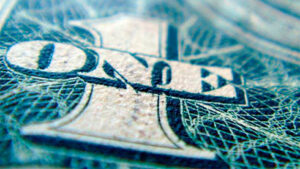
The U.S. dollar is moderately weakening against the euro and the pound, and is rising against the yen in trading on Monday.
The ICE-calculated index showing the dollar’s dynamics against six currencies (euro, Swiss franc, yen, Canadian dollar, pound sterling and Swedish krona) is losing 0.12%, while the broader WSJ Dollar Index is down 0.11%.
The euro/dollar pair is trading at $1.1037 as of 2:50 p.m., up from $1.1018 at the close of the previous session, the euro is strengthening about 0.2%.
The dollar/yen was up 0.2% to 135.17 yen from 134.86 yen in Friday trading.
The pound rose 0.15% to $1.2653 from $1.2633.
Traders’ attention this week is focused on the Bank of England meeting, the results of which will be announced on Thursday. The British Central Bank is expected to raise its benchmark rate by 25 basis points (bps) at its upcoming meeting, to 4.5%.
Last week, the European Central Bank (ECB) and the Federal Reserve (Fed) raised rates by a similar amount.
“The interest rate differential between the eurozone and the U.S. continues to narrow, which reduces pressure on the euro against the dollar,” said Commonwealth Bank of Australia analyst Carol Kong. – We expect that the euro will continue to receive support due to the fact that the market expects rate cuts in the U.S. later this year and new raises from the ECB.
Traders are also waiting for U.S. consumer price data for April, which will be released Wednesday. The consensus analyst forecast, cited by Trading Economics, suggests that inflation in the U.S. last month remained at March’s 5% annualized rate.
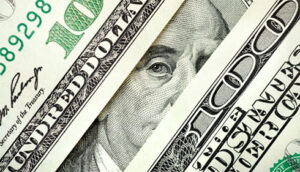
The U.S. dollar is advancing against major world currencies.
Including the yen fell against the U.S. national currency to its lowest in six weeks on expectations of further interest rate hikes by the Federal Reserve, Trading Economics said.
Meanwhile, the new head of the Bank of Japan Kazuo Ueda said on Monday that the soft monetary policy will remain in force for the time being. Meanwhile, he expects the growth rate of consumer prices to start slowing down soon.
Ueda’s first meeting as the head of the Japanese Central Bank will take place at the end of this week. Following its results the bank will publish an updated economic forecast.
The Euro is trading in the morning at $1.0977 against $1.0992 at the end of the last session.
The value of the single European currency is now around 147.42 yen compared to 147.44 yen on Friday. The dollar exchange rate is 134.30 yen against 134.14 yen at the end of the previous trading day.
The DXY index, which shows the value of the U.S. dollar against six major world currencies, is up 0.04% in trading. The WSJ Dollar, which tracks the movement of the dollar against 16 currencies, rose 0.13%.
The pound is trading at $1.2426 compared to $1.2440 on the previous trading day. The euro is at 0.8836 against 0.8834 a day earlier.